Fire and Rescue Service Wildfire Operational Guidance
This guidance has been produced to give fire and rescue service personnel an additional understanding and awareness of the phenomenon of wildfire. It examines the hazards, risks and controls relating to Fire and Rescue Service personnel, the personnel of other agencies and members of the public at Incidents of wildfire. It also provides a point of reference for those who may be called upon to plan for wildfire events and for those incident commanders and personnel responding to such incidents.
8B6 The Wildfire Prediction System (WPS)
Introduction
8B6.01 Without the ability to predict future fire spread and behavioural change, it is difficult to manage wildfire incidents safely or indeed select appropriate systems of work within an effective tactical plan.
8B6.02 The purpose of this section is to provide firefighters with a methodology that allows them to proactively anticipate and quantify probable changes that will occur to fire behaviour during an incident.
8B6.03 If this methodology is adopted it will assist in providing assurance that the primary responsibilities of incident commanders can be fulfilled, and that the health and safety of operational personnel active on the fire ground can be maintained.
Fire Prediction
8B6.04 The likely fire behaviour that will result from changes within the wildfire environment has been described within the previous sections, providing some awareness and knowledge of fire development. This information allows a limited interpretation of the fire behaviour that is likely to occur, and provides a useful baseline knowledge that can be applied to explain what may happen in the future. To further build on this understanding, this section will describe a system that can be used by all personnel to predict where and when changes are likely to occur as the fire moves across the landscape.
8B6.05 In simple terms the purpose of WPS is to provide a prediction tool that gives an understanding of where fire behaviour is likely to get better or worse, it can then be used to identify the 'Windows of Opportunity' or in other words, time slots that exist where fire behaviour is such that it will allow the use of successful suppression tactics. The fuel arranged across a landscape is positioned in different fire alignments; its location in relation to fire spread will determine how readily it will burn and WPS can be used to identify what fire alignment fuel is in and where this will change. Recognising that change will occur during the incident, then having the ability to identify when and where the changes will happen is the key to effective wildfire management. This is a methodology that has hitherto been lacking within the UK FRS.
Background
8B6.06 The prediction system used in this guidance is based on the Campbell Prediction System (CPS) which was developed by the veteran wildland firefighter Doug Campbell from the USA. The CPS has been modified to provide UK firefighters with a flexible and practical tool that can be applied to our own national wildfire environment.
The UK Wildfire Prediction System
8B6.07 The Wildfire Prediction System (WPS) described within this guidance is designed not only to provide fire service personnel with a tool to explain present fire behaviour, but more importantly, predict likely changes to fire behaviour in the future.
8B6.08 The primary purpose of any wildfire prediction system is to reduce levels of risk. The application of WPS by fire service personnel represents an effective risk management tool. Not only will WPS provide an interpretation of fire severity it can be used to formulate an understanding of how a fire will spread across the landscape and explain the wildfire's interaction with the terrain and the available fuel covering. The need for such a tool is obvious, as it allows the adoption of a proactive approach and assists in the risk assessment and decision making processes. WPS can be used to assist in the effective management of any wildfire incident.
8B6.09 WPS is designed to be a practical tool that can be applied to meet different operational situations; it can be used on the fire line to address safety issues, or it can be employed as a risk assessment tool and progressive planning aid allowing Incident Commanders to make informed decisions to develop appropriate tactics to resolve the incident.
8B6.10 In short, WPS can be adapted to suit the needs of the user depending on their role within the incident command structure or operational activity.
Advantages and Benefits
8B6.11 For personnel working near to the fire:
- Explains current fire behaviour.
- Identifies likely changes to local fire intensity and fire spread.
- Allows an understanding of when it is necessary to adopt different tactics to address changing levels of risk.
- Delivers a risk assessment tool that can be applied by individuals to their local operational environment.
- Contributes to the maintenance of personal situational awareness.
- Provides an assurance and support mechanism for less experienced personnel.
8B6.12 For personnel supervising or commanding operations:
- It allows a proactive rather than reactive approach to risk management.
- Provides operational commanders with a planning aid that improves the decision making process
- Assists operational commanders to make professional judgements in order to use the available resources in such a way as to maintain safe systems of work during work activities
- Indicates which tactics are most appropriate, and when and where these are likely to succeed. (Windows of opportunity)
- Assists in the communication process.
- Allows efficient use of available resource.
Managing Change in the Wildfire Environment
8B6.13 The safety of personnel operating near to the fire front is dependent on those individuals having the ability to identify change, and understand when these changes are likely to occur. This will allow fire service personnel to proactively take action and adopt suitable control measures.
8B6.14 Proactive identification of hazards ensures that commanders are able to adopt a balanced and informed approach between risk management and the achievement of the operational objectives set within the incident plan. Tactically, WPS is of great benefit to operational commanders as it provides them with information that will help to identify, where and when, the various parts of the fire will fall within the threshold of control of the available resources. This allows for an effective plan to be formulated that takes advantage of changes to fire behaviour.
Improving Safety and Effectiveness
8B6.15 Historically, a major problem encountered at wildfire incidents has been the misconception that the parts of the fire demonstrating the most fire activity are the locations at which resources must be deployed, and where control of the fire must be immediately established.
8B6.16 This potentially results in a concentration of effort and resource at these specific locations. FRS personnel should understand that sometimes, the parts of the fire that show little activity are those that have the most potential for significant future fire development.
8B6.17 Plans should be based not on what a fire is doing at a particular point in time, but on what it is likely to happen in the future. The initial and continuing priority must be to analyse the fire perimeter and establish what potential each part of the fire has for development and where changes to intensity will occur.
Changes to Fire Behaviour
8B6.18 By analysing a fire's outward motion and identifying where fire behaviour will alter, officers will be able to formulate a plan that is based around fighting the fire in areas where control can be more easily established, before it moves into areas where fire behaviour will be beyond the control of available resources or where firefighting operations will be more dangerous.
8B6.19 WPS identifies windows of opportunity where timed offensive strategies can be applied when a fire's alignment with wind, slope and aspect is weakest and the situation is advantageous for firefighting. WPS also identifies locations where suppression methods would be likely to fail or, more importantly be dangerous. This approach ensures that tactics are applied at the appropriate time ensuring that they are safe and effective.
8B6.20 All personnel that are operationally deployed at wildfire incidents should have an understanding of the Wildfire Prediction System.
The Wildfire Prediction System
8B6.21 If we include all of the many variables that can influence fire behaviour within the wildfire environment, prediction models can become hugely complicated and almost impossible to apply as a practical tool. Furthermore the level of understanding required to manage such a system would demand a huge amount of knowledge and experience. In the UK, where firefighters are required to operate within a wide portfolio of emergency response scenarios, a simpler system is required. To understand how WPS works it is important to realise that although fire behaviour appears to change unexpectedly, the fire is simply reacting to its environment. In essence, the shape of the landscape, the weather, and the available fuel complex are the factors that will influence and bring changes to the fire.
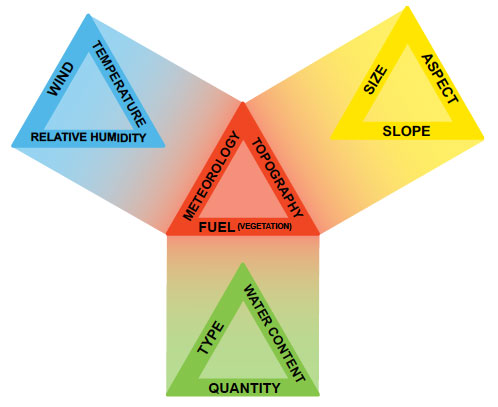
Fig. B6.1 The wildfire environment is dominated by fuel, weather and topography
8B6.22 The fundamental purpose of the UK Wildfire Prediction System is to provide a simple tool that will assist in proactively identifying likely fire intensities; this simplicity allows it to be applied practically and in real time. It can be used by personnel that have limited knowledge and experience and is therefore ideally suited for FRSs that have a sporadic wildfire risk and whose personnel may lack familiarity with the complexities involved in dealing with wildfire incidents.
Fire Alignments
8B6.23 WPS uses the principle that fire behaviour within a given fuel is influenced predominately by its alignment with three major forces, these are:
- Wind
- Slope
- Aspect
8B6.24 These are described within WPS as 'the forces of alignment' because whenever a fire is supported by wind, slope or aspect its ability to interact with the available fuel is improved and it burns with more intensity. Whenever the fire loses support from one or more of these influencing factors, the fire activity and intensity will decrease.
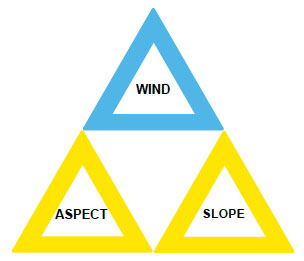
Fig. B6.2 Three principal fire alignments' forces
8B6.25 WPS is a process that analyses the landscape, identifying the fire's potential alignment as it moves through the fuel arrangement. The variable strengths of alignment can be used to forecast fire intensity and indicate direction of travel around the fire perimeter.
8B6.26 For example, if a fire is burning in a common fuel type, the parts that demonstrate the highest fire intensity are those that are being supported by one, or more, of the alignment forces. The parts that burn with less intensity are those that have less support or where they are burning against them.
8B6.27 Fire alignment can therefore be used to explain why a fire develops a head, tail and flanks - all usually showing different fire activity because of the differing strengths of alignment.
The Wildfire Triangle
8B6.28 The wildfire triangle visually demonstrates the concepts involved in wildfire prediction. Although it is important to understand that fuel is not an alignment force, it remains the central, and crucial, element of the triangle. As illustrated below, it is surrounded by the three alignment forces. The intensity of any fire will be dictated by the fuel complex in which a fire has the opportunity to burn, and the support given to it by the topographical and meteorological alignment forces used in the prediction system.
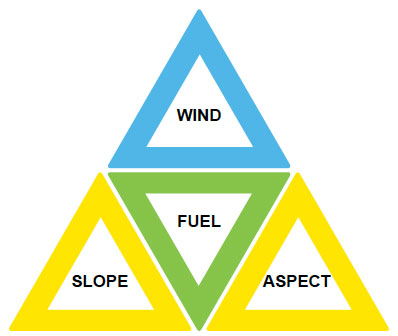
Fig. B6.3 This is the wildfire triangle which shows the alignment forces arranged around the fourth part of the triangle which is fuel. The alignment forces will affect the way a fire burns within a fuel source; the stronger the alignment the more intense the fire is likely to be in whatever fuel is available to burn
The Three Stages of Prediction
8B6.29 There are three ways or stages that WPS can be applied:
Stage one is by observation normally reliant upon intelligence collected by personnel on the fire ground. By using WPS during operational activity, responding personnel can keep themselves and others aware of probable changes to fire behaviour.
Stage two is utilised more by those involved in planning who wish to take a broader view of the incident and map the predicted changes that are going to take place across the landscape. This information can then be used to chart the extent of fire travel over a defined period of time and identify locations critical to fire development and suppression across the landscape.
Stage three is the final stage and should be applied by wildfire specialists. It involves making a judgement on what fire behaviour will be experienced in the various alignments. Specialists assess the alignment strengths and consider the fuel source before the risk is measured and expressed as a flame length.
First-stage Prediction
Using WPS to identify positions across the landscape where fire behaviour is likely to change.
8B6.30 If the three alignment forces can be used to explain current fire intensity they can also be applied to help predict future fire behaviour. This can be achieved by identifying the changes that will occur as the fire alters its position on landscape. In other words, predicting where the fire moves in and out of alignment with wind, slope or aspect. This can be achieved by examining the landscape and recognising where these effects will take place and whether they have a positive or negative effect on fire development.
Prediction Terminology
8B6.31 The language used to communicate or record this information is important and plays an integral part in the process. By classing each alignment force as a 'factor' that will change fire behaviour then a measurement of alignment support can be made.
Parts of a fire that are supported by any one force are described as a Factor One Fire
Parts of a fire that are supported by any two forces are described as a Factor Two Fire
Parts of a fire that are supported by all three forces are described as a Factor Three Fire
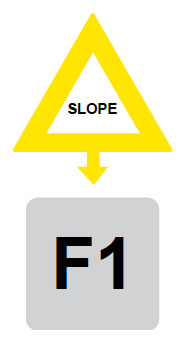
Fig. B6.4 An F1 fire is one that is supported by any alignment force - in this case Slope

Fig. B6.5 An F2 fire is one that is supported by any two alignment forces - in this case Slope and Wind
8B6.32 A fire that lacks support from any of the alignment forces should be termed to be a Factor Zero Fire. This terminology can be further abbreviated to F0, F1, F2, and F3.
Additional terminology to be used when describing fires alignment is:
An F0 part of a fire is one that is 'Out of alignment'
An F1 or F2 part of a fire is one that is in 'Partial alignment'
An F3 part of a fire is one that is in 'Full alignment'
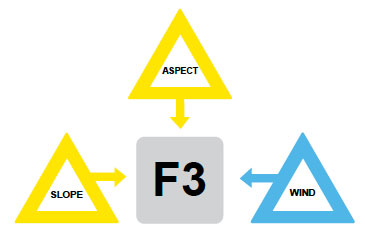
Fig. B6.6 An F3 fire is one that has the support of all three alignment forces; Wind, Slope and Aspect
Prediction Values
8B6.33 To reach a prediction value all factors acting in the fires support should be added together. No deduction is made for factors that are acting against the fire.
8B6.34 As an example, if a part of a fire has the support of wind and aspect +1 would be added for the wind and +1 for the aspect. Even if the fire was burning down slope there would be no reduction to the value (i.e. -1). Therefore it would remain an F2 fire rather than F1. Using this principle, a fire cannot have a value lower than F0.
8B6.35 The use of this terminology allows the communication of risk critical information in a simple and easily understood format and when used, will improve the flow of information during operational incidents.
The Practical Application of WPS
8B6.36 WPS can be used to identify all locations where there is an alteration in fire alignment and therefore a probable change to fire intensity. By using this method firefighters and fire officers can identify potential fire severity around a fire's whole perimeter. Using WPS to explain what alignment each part of a fire is in will help build up a picture of the fire's likely outward spread across the landscape.
8B6.37 Visual observation is the simplest and quickest method to use. By observing the fire and the topography, and then assessing its potential movement across the landscape, the locations where the fire will change its alignment can be determined.
8B6.38 The illustration below shows the head part of a fire that is burning upslope, with the support of the wind and in an area that is in aspect. The strength of alignment would in this case be described as a Factor Three Fire (F3).

Fig. B6.7 Fire burning in full alignment
8B6.39 When the head fire reaches the top and starts to burn down the slope it loses alignment with slope and aspect, it still has the support of wind, so its alignment strength has changed from factor 3 (F3) and becomes a Factor One fire (F1).

Fig. B6.8 The fire has lost the support of slope and aspect resulting in a reduction in alignment and fire behaviour
8B6.40 In this next illustration the fire has progressed down the slope and up the next one in full F3 alignment again and finally moving back down the final slope as an F1 fire.

Fig. B6.9 The fire found full alignment on the reverse slope but then has reverted back to being supported only by wind
8B6.41 As is demonstrated in the illustration, when the head fire is in an F3 alignment it is likely to be much more intense than an F1 fire leading to an increase in flame length and rate of spread.
8B6.42 This simple exercise demonstrates how the changes to fire alignment, and therefore potential fire strength, can be identified. This information can then be used to identify locations where the fire may have more, or indeed, less intensity and consequently enable Incident Commanders to maximise fire suppression opportunities and maintain personnel safety.
Case Study
8B6.43 This section will examine how the prediction system can be used operationally to help understand fire behaviour.
The photograph below is taken of a wildfire burning under the following circumstances:
- The fire is burning from the top and moving towards the bottom of the slope.
- The wind direction, as is shown by the direction of the smoke column, is directly opposite to the forward motion of the fire.
- The fuel which is scrubland, is exposed to sunlight and is in aspect.
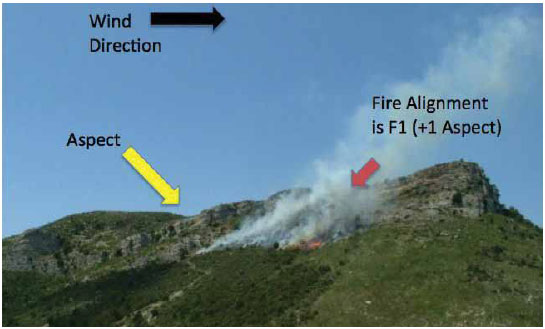
Photo B6.1 A fire that is burning against the wind and slope
8B6.44 To determine the fire's strength of alignment we must decide which of the forces are supporting the fire and which are not.
Slope - The fire is burning on a slope but is actually moving downwards against the alignment. In this situation the fire is not supported by the slope.
Wind - As can be seen by the direction of the smoke column, the fire is backing against the wind and therefore the fire is not being supported by the wind.
Aspect - The slope is in aspect and the fuel arranged on it has been preheated by the sun. The fire is aligned with aspect.
Taking these factors into account the fire only has aspect in its favour so it is a Factor One Fire (F1).
8B6.45 To bring the fire under control a team of wildfire specialists have decided to use fire as the suppression method. They have lit a fire along a control line which will burn out the fuel on the lower part of the slope.
The counter fire is burning under the following circumstances:
- The fire is burning from the bottom and moving towards the top of the slope.
- The wind direction is the same and supports the fire's forward motion.
- The fuel type is the same type and is in aspect.
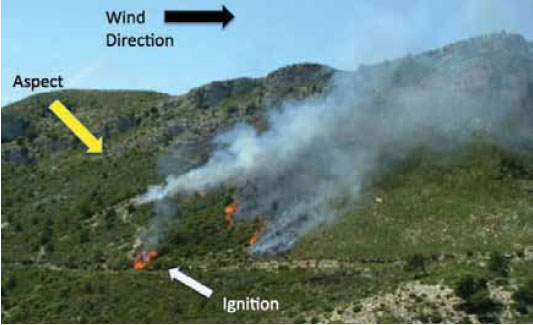
Photo B6.2 The operational offensive burn is in full alignment
8B6.46 Although the counter fire is burning on the same slope its position on it has altered the fire's potential strength. To determine the counter fire's alignment we must decide which of the forces are supporting the fire and which are not.
Slope - The counter fire is burning upslope and is therefore in alignment with it.
Wind - The counter fire is burning with the support of the wind and is therefore in alignment with it.
Aspect - The counter fire is burning in fuel that is in aspect.
8B6.47 Taking these factors into account the fire benefits from the support of all three alignment forces and is therefore termed to be a Factor Three Fire (F3).
8B6.48 Although both fires are burning on the same slope and in the same fuel, the photograph below illustrates the dramatic effect a change in alignment can have on fire behaviour. WPS can proactively identify where these changes in alignment will occur.
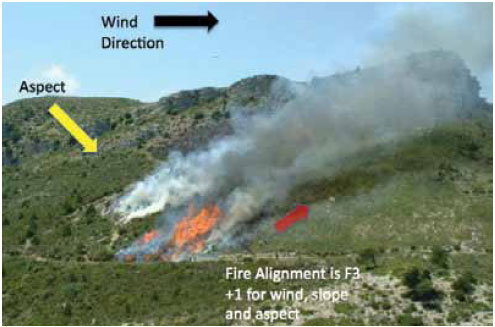
Photo B6.3 The operational burn has much more intensity than the wildfire and is used to remove all fuel in the fire's path
Fire Signature
8B6.49 A fire signature is the term used to describe how a fire behaves when it is burning in different fire alignments, within a uniform fuel. By observing the behaviour demonstrated in each alignment, an understanding can be reached regarding the potential flame lengths that can be expected in the future.
Example:
- A head fire is burning upslope in an F3 alignment.
- The tail of the fire is burning down the same slope in an F1 alignment.
- The head fire reaches the top of the slope and starts to burn down the reverse side in an F1 alignment - the flame length should now be similar to the tail fire.
8B6.50 An understanding of the potential differences in flame length, as the fire moves across the landscape, can be used to maximise the effectiveness and safety of resources deployed onto the fire ground.
Second-stage Prediction
Mapping Potential Fire Development
8B6.51 WPS can be used in conjunction with mapping systems to identify changes to alignment on a broader scale. The methods described within this section will assist officers to develop safe, efficient and effective plans.
8B6.52 Alignment mapping is a process where changes to alignments are identified and then recorded on a map. This process can be used to build up information on how the shape of the landscape is likely to influence future fire behaviour, pin pointing locations where alignments will change.
8B6.53 To carry out an assessment exercise of this type, it is essential to understand how the landscape is represented on a map. Of particular importance are the contour lines which show the shape of the terrain.
Fire Footprint Mapping
8B6.54 Having first recorded the fire alignments on a map, judgements can then be made on likely fire spread. The shape of the landscape and strength of alignments will dictate a fire's outward motion. This can be estimated and drawn within a time frame that is relevant to the event.
8B6.55 To construct a fire footprint the alignments around the fire must be identified and recorded. This may involve examining the map in detail and recording all of the alignment changes over an extensive area. This process builds up a picture of how the fire will potentially move across the landscape.
8B6.56 The initial fire footprint should not take into account any expected fire suppression activity but concentrate on the natural spread of the fire over the landscape. Consideration should also be given to the fuel types that are present. Where this is not uniform, rate of spread may vary depending on its type and arrangement.
Placing Alignments on a Map
8B6.57 The following example is used to show how to apply WPS to a map, identify likely fire spread and explain how this information assists in the development of a plan.
Case Studies
Scenario one:
- The time of day is 09.00 hrs.
- The wind speed is 5 mph and its direction is northerly, this will change to an easterly with a speed of 11 mph at 13.00 hrs.
- The fuel type is moorland consisting of a mix of heather and grass.
- The point of ignition is shown as a red dot on the map.
8B6.58 This information allows the use of contours on a topographical map to predict the fire's potential movement and strength over a period of time, in this case over the next 6 hours.
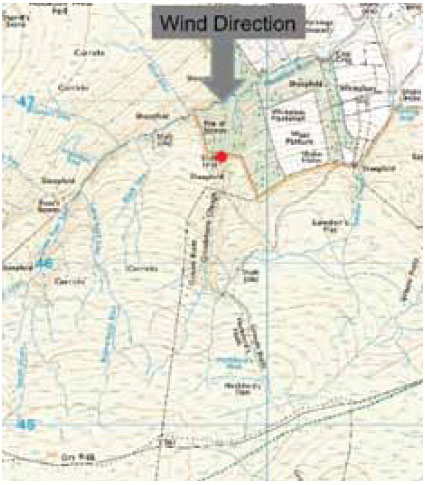
Fig. B6.10 Showing the point of ignition
8B6.59 As has already been explained, fire will spread outwards from the point of ignition, but its movement through the available fuel will be most rapid where it has alignment with wind, slope or aspect. To discover how the fire will develop we must identify the alignment the fire is in during its initial stages.
8B6.60 The northerly-facing slopes in this illustration are out of aspect at 09.00 hrs and are likely to remain so. Therefore the fire is burning in fuel that has not benefited from any solar preheating. The tail of the fire is backing against the wind and slope and is therefore completely out of alignment. The head is being supported by wind and slope. Although alignment remains consistent, the re-entrants in the fire's path will concentrate wind speed and exaggerate fire spread. This will allow the fire to develop a strong head with broadening flanks.
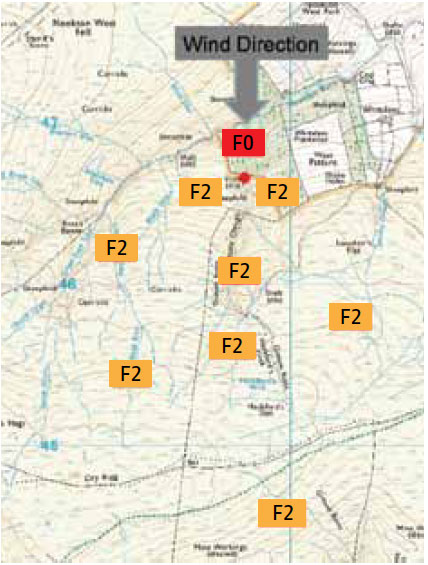
In all illustrations showing fire alignments use the following key; F0 Light Yellow F1 Yellow F2 Orange F3 Red (This gives an indication of risk. Fig. B6.11 Showing the alignments that will be in as it moves across the landscape
8B6.61 Based on the alignment the fire has, the illustration above is an estimation of fire spread from 09.00 hrs until 13.00 hrs after which the wind will change its direction.
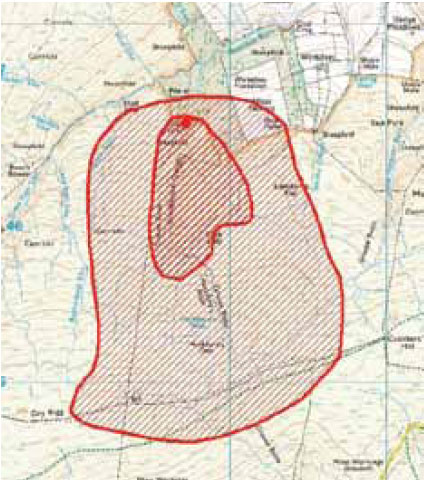
Fig. B6.12 The potential fire development over 4 hours
8B6.62 The change in wind direction at 13.00 hrs will shift alignment and alters the fire's potential development around its whole perimeter. With the change in alignment, some parts of the fire will become stronger while others have weakened. The right flank becomes the head, this will move towards the south-easterly-facing slopes that have been aligned with the sun during the morning and which are identified as F3 areas on the map.
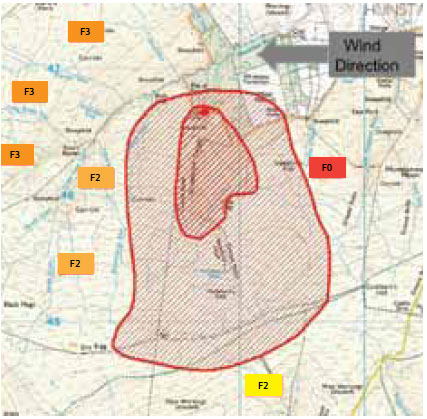
Fig. B6.13 The potential fire spread after 13.00 hrs, note how the wind has influenced significant changes to alignment values and direction of fire travel
8B6.63 The wind change will provide the fire with potential to develop into a fire of some magnitude. Once it moves into the F3 areas it will find full alignment and this will dramatically increase the fire's intensity and rate of spread. (Note the strong fire runs that are indicated along the steep re-entrants)
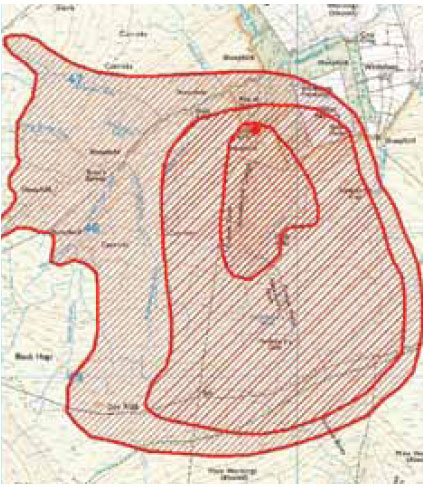
Fig. B6.14 Showing the potential fire spread over a 6-hour period
Using the Fire-mapping Information
8B6.64 Having proactively identified the fire's full potential development over the coming 6 hours, we are able to use this information to formulate a plan. This should be based on preventing the fire from achieving its potential by taking full advantage of any windows of opportunity.
8B6.65 The wind change at 13.00 hrs is a critical event that will change fire behaviour, spread and intensity. The fire will be driven towards the F3 areas and the fire will become a more prolonged and dangerous incident. Knowing what the consequences of this change will be helps us to understand what the operational objectives are.
8B6.66 The window of opportunity to gain control over the fire is from 09.00-13.00 hrs. The right flank of the fire is now recognised as the part that is critical to the fires future development. If control over the right flank is achieved before 13.00 hrs, the wind change is actually advantageous to firefighting operation as the rest of the fire will lose some alignment and as a result reduce in intensity.
The plan might therefore be:
- Extinguish the tail immediately while it has no alignment.
- Attack both flanks but with an emphasis on maintaining complete control of the right flank. If the right flank is extinguished before 13.00 hrs then the fire will not be able to develop a head when the wind change occurs.
- Wait until the wind changes direction and then extinguish what had been the left flank (now the tail), taking advantage of its reduced intensity.
- Extinguish what had been the head fire (now the left flank), taking advantage of its reduced intensity.
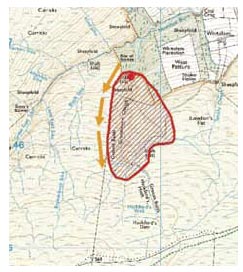
Fig. B6.15 The fires future potential intensities and size can be limited by applying appropriate tactics
8B6.67 The use of alignment mapping has allowed us to understand the fires potential over a 6-hour period. This has provided us with the information necessary to formulate a plan that anticipates and takes advantage of the changes that will occur.
8B6.68 This knowledge allows us to outmanoeuvre the fire, deploying appropriate resources and gaining control of parts of the fire that are critical to its future development.
Using WPS to Locate Critical Parts of the Landscape
8B6.69 The following example is used to show how to apply WPS to a map to help identify critical points on the landscape where fire behaviour may increase substantially. The identification of these will assist in establishing priorities within the suppression plan.
Scenario two:
- The time of day is 13.00 hrs.
- The wind speed is 7 mph from the south west.
- The fuel type is moorland consisting of a mix of heather and grass.
- The point of ignition and the fire footprint for the first hour is shown on the map.
8B6.70 This information allows the use of contours to predict the fire's potential movement and strength over a period of time; in this case over the next 4 hours.
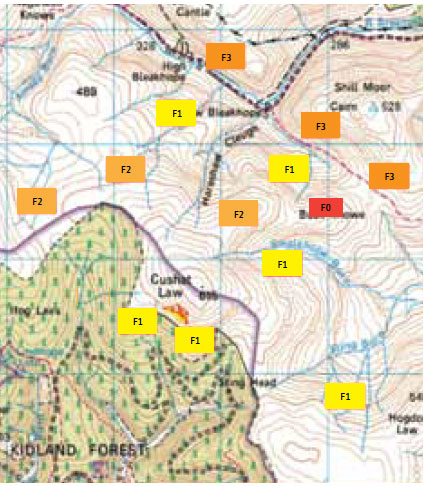
Fig. B6.16 Alignments show where there may be significant changes to fire alignments and fire behaviour
8B6.71 The illustration above shows the fire perimeter after one hour. It also details the potential fire alignments across the landscape. These alignments, along with the contour information on the map, can be used to identify the likely pattern of fire spread during hours two, three and four.
8B6.72 The alignment mapping shows that the fire is burning downslope at the tail, both of the flanks and the head. The major critical points are identified where the fire reaches a point where there is a slope reversal, this is identified by the factor-three alignments in the north-east corner of the map. This will result in a significant increase in rate of travel, flame length and intensity.
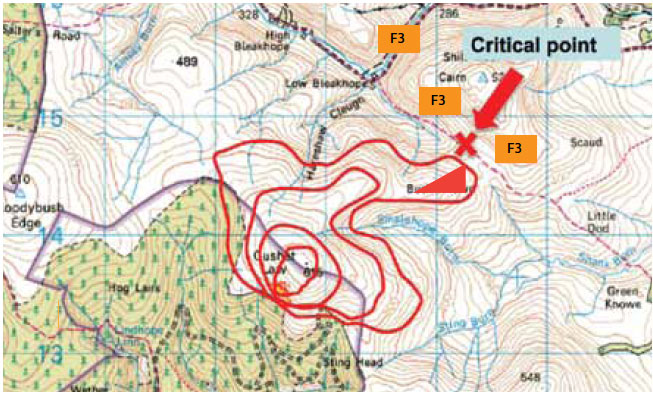
Fig. B6.17 The critical area is along the base of the slope where fire alignment changes from F1 to F3
8B6.73 The identification of these critical points shows the importance of extinguishing the fire before it reaches these locations or, taking measures to protect them such as the construction or strengthening of a control line.
Third-stage Prediction
8B6.74 Trained wildfire specialist officers can apply their more advanced knowledge and understanding to provide a more comprehensive assessment of risk. This third phase is based on analysing the fuel complex across the landscape and the alignments that they are in. Taking these variables into consideration it is possible to estimate the expected flame length; this can be used as a key indicator of potential risk within the wildfire environment.
Using Flame Length to Measure Risk
8B6.75 Flame length is a visual method of measuring risk at a wildfire. Its use allows the adoption of safe systems of work, or tactics that are appropriate to specific flame lengths.
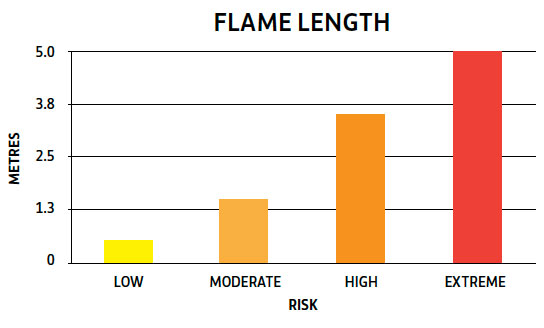
Fig. B6.18 Risk associated with each flame length
LOW RISK
Flames that are less than 0.5 metre in length are deemed to be of low risk.
MODERATE RISK
Flames that are between 0.5 and 1.5 metres in length are deemed to be of moderate risk.
HIGH RISK
Flames that are between 1.5 and 3.5 metres in length are deemed to be of high risk.
EXTREME RISK
Flames that are more than 3.5 metres in length are deemed to be of extreme risk.
Scenario Three:
- The time of day is 10.00 hrs
- The wind speed is 6 mph from the south-west
- The fuel is mixed consisting of thicket stage conifer forest, heather and scrub
- The point of ignition is shown as is the fire footprint for the first hour
8B6.76 This information, and the use of the contours on the map, allow personnel to predict the fire's potential alignments over a period of time, in this case over the next 3 hours.
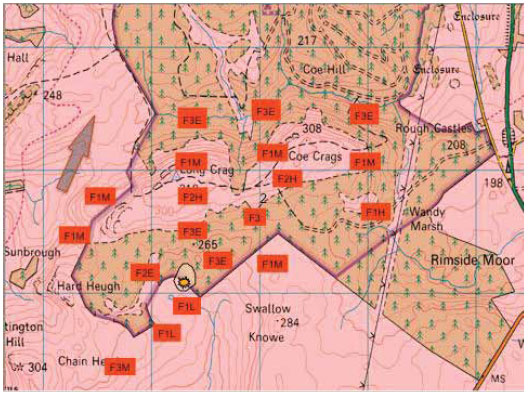
Fig. B6.19 Fire alignments are placed on a map
8B6.77 As can be seen in the illustration above the alignment information is useful but it gives no detail on the expected fire intensity or levels of risk.
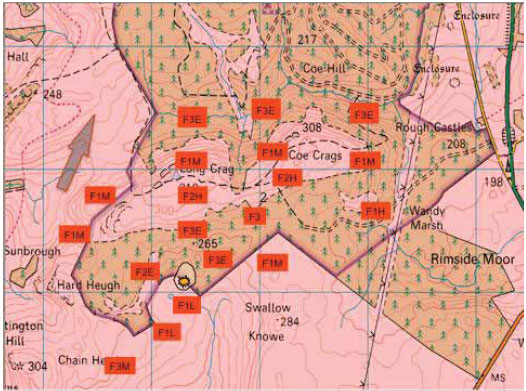
Fig. B6.20 A risk factor based on expected flame lengths is added to the alignment values
8B6.78 In the second illustration a risk factor based on expected flame length has been added. This takes into account the alignment and fuel type at each location.
8B6.79 This form of hazard mapping adds value to the process as it not only identifies risk, it also indicates which tactics might be successful or more importantly those that could be hazardous.
Fire-risk Mapping
8B6.80 This final map shows how the alignment information can be used to assist in the formulation of a safe suppression plan. The areas marked in red are those at which the fire behaviour is expected to be very intense and of high risk; in this case likely to demonstrate behaviour beyond the threshold of control of the available resources. The areas marked in green are where suppression tactics are forecast to be safe and where they are likely to succeed.
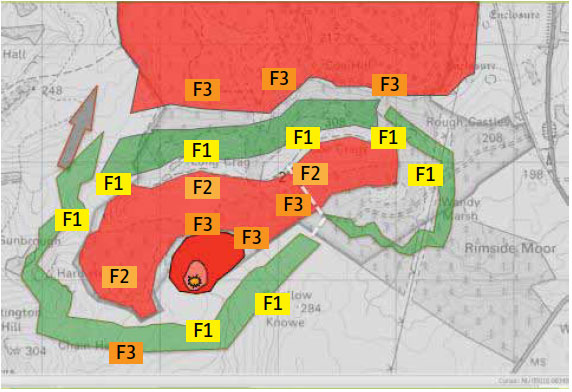
Fig. B6.21 This map shows areas of different alignment and risk which indicates which tactics may be appropriate. Direct attack would only be appropriate in the areas shaded in green
Summary
8B6.81 Historically, wildfire has been an incident type that has been very challenging and difficult to manage. It is dynamic, non-static and alters behaviour within time and space. If WPS is used as a forecasting tool it can greatly assist in understanding the times and places where intensity will change. It is a system that is flexible and simple to apply and instead of reacting to what a fire is doing WPS allows a proactive and assessed response. Planning can be based around timed initiatives and the use of appropriate tactics. If trained and experienced personnel develop an accurate prediction of future wildfire development and this subsequently is shown to be correct; then when married to appropriate response tactics, then there is a high likelihood that the tactical plan will succeed.
B86.82 Variations of slope, wind and aspect are important sources of fire behaviour information and are observable. The fourth part of the equation is the existing fuel complex. Understanding how a fire will react within this complex is crucial when making accurate fire predictions.
8B6 Key Considerations
- By applying WPS to a topographical map, alignment strengths can be used to identify likely fire spread, fire intensity and fire behaviour over periods of time.
- When used in conjunction with the LACES protocol, WPS can proactively assist in maintaining the safety of personnel at a wildfire incident.
- WPS can show areas where the fire has little alignment and where suppression tactics are likely to succeed.
- WPS allows FRS personnel to identify areas where a wildfire may become difficult to control or exhibit extreme fire behaviour.
- WPS can be adapted to suit the needs of the user depending upon their role within the incident command structure or tactical operational response.
- WPS highlights the importance of the three wildfire alignment forces of Wind, Slope and Aspect.
- WPS can be used as a three-stage iteritive process depending upon the users skill and experience.
- All personnel operating at a wildfire incident should have an understanding of the WPS system.
Contact
Email: Dean Cowper
There is a problem
Thanks for your feedback